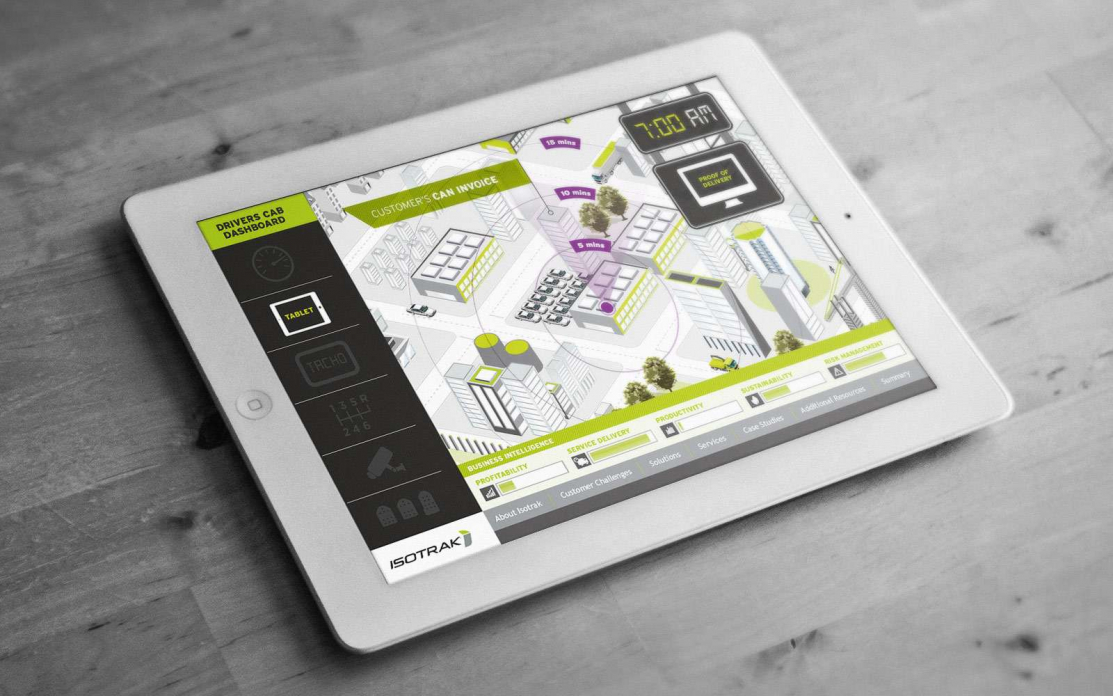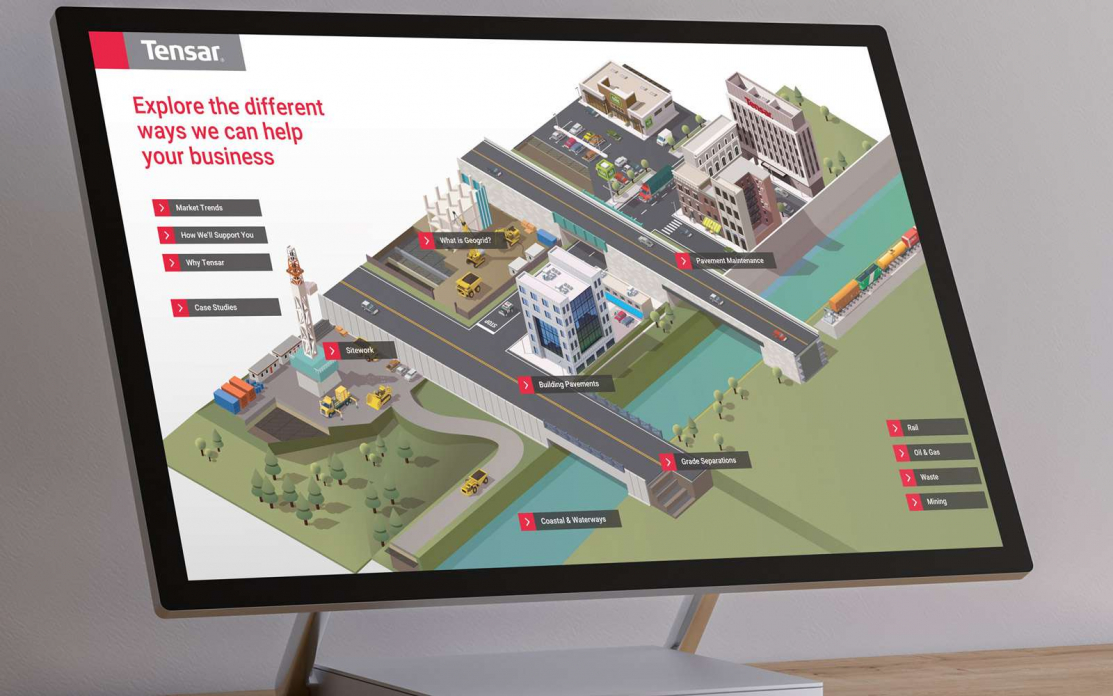Content marketing and sales enablement are two terms aren’t always immediately linked – but they should be.
After all, content can be one of the most effective ways for your customers to find out the answers to vital questions they need to know before making a purchase.
Here at POP, we specialise in helping companies with complex solutions demonstrate value to their customers in visual, engaging ways that can then lead to meaningful conversations – via bespoke interactive content delivered on a touchscreen.
We’re going to tell you why whether you’re just getting started on a sales enablement strategy, or are looking for ways to make yours more effective, then content marketing should be high on your list of priorities.
Why is content marketing so good for sales enablement?
Essentially, sales enablement is defined as “the delivery of the right information to the right person, at the right time and in the right place” whereas content marketing (when done right) happens to be probably the best method of doing just that.
You’re probably using some form of content right now to help raise awareness of your products or services, answer your customers’ questions, and even help nurture them along the buyer’s journey. People like to do their own research, and on their own terms, so anyone not putting out content is missing a trick.
Marketing and sales teams alike can both benefit from quality content marketing. How? Well, let’s start with marketing; Your team may be using the content along with tools like sales automation to keep leads moving down the funnel, and track the success of various campaigns.
They can also publish your weekly content in a blog, share it on the likes of LinkedIn, and repurpose it into a video, infographic or piece of interactive content.
You may think that’s all very well for marketing, but how does content marketing possibly fit into the sales model? Actually, your sales team can access that same content when engaging with a prospect, and can use it to perfectly demonstrate a point, highlight a benefit or to help answer a vital question.
They could then send that content to the prospect so they can read over it in their own time later on. So, that same content can come in multiple forms, have multiple applications and be invaluable to both departments.
In fact, despite its name, content marketing perfectly aligns with sales and is intrinsically linked to any thoroughly thought-out sales enablement strategy best practices. That doesn’t necessarily mean it’ll be successful; that part all comes down to you.
Get both your sales and marketing team involved
Yes, you read that right the first time. Despite the idea of sales and marketing coming from completely different worlds seeming a bit stuck in the ’90s, some people are still adamant they won’t work well together. Why? Your sales and marketing teams are both working towards one ultimate end-goal; to bring in business.
So, when it comes to working out your content marketing and sales enablement strategy (more about that below), both of them should be sitting down at the table – along with anyone else who deals with your customers, be it face-to-face or over the phone. Don’t dismiss your receptionist or customer service reps.
Don’t put too much focus on a ‘content calendar’ – that’s for the later stages of planning. Instead, focus on the data each side can bring to the discussion, along with the questions, concerns and challenges your customers are currently facing at every stage of the buyer’s journey (again, more about that below).
Tip: Don’t forget that stories are important, too. If you can gather real-world stories that perfectly demonstrate how something came together, or failed – and why – in your content, it helps bring your content to life.
Plan your content strategy together – here’s how:
Okay, first thing’s first. Have you already been trying your hand at putting out some content? If so, it’s important to bring in the current data you have to the table, including things such as conversion rates, previous blog topics and the posts with the most views/engagement.
Regardless of whether you’ve already been publishing content, aim to send everyone some questions before you meet – this will get everyone’s minds working on the types of things you want to hear about.
These should include:
- Three triggers – in other words, what are the things that trigger customers to search for your products or services?
- Questions or challenges relating to those triggers that – and this is vital – they know for a fact your customers are asking
- Ideas for premium downloadable content that relates to these triggers and can deliver value
Tip: What about the types of content you should add to your sales enablement toolkit? Don’t worry, we’ve got you covered.
Find the best way to effectively manage your content
A shocking study by Aberdeen.com found that sales reps spend, on average, five working days every month searching for the relevant content they need to make a sale. Can you imagine wasting five solid days finding content, and all the extra productivity that could be harnessed if you only had one easy place to keep it all!
Your options include acquiring a robust, dependable content management or sales enablement platform (the likes of Showpad and Learncore, for example) which can help you and your team access and manage your content effectively.
Or, you could invest in something a bit flashier, such as an interactive sales tool (the type you’d use on an interactive touchscreen) that you could set up in a sales suite or demo room. Your team could take it to an important pitch, or event.
The good thing about interactive touchscreen experiences is that the options are almost limitless, and it’d also help deliver the ‘wow’ factor in an engaging, visual way that would help you keep your audience’s attention and help demonstrate the value of your solutions.
Perhaps a combination of both of the above wouldn’t be a bad option. Either way, good content management is definitely essential if you want your content marketing and sales enablement strategies working fluidly and effectively as one.
Collaborate, communicate, and consolidate efforts
In other words, your efforts shouldn’t stop once you have a solid strategy going forward. For instance, perhaps one of your sales reps is finding a blog post packed full of sales enablement statistics really helpful and wants to share it with their team – and they do. Their entire team knows what’s working now, and what to utilise.
But, it doesn’t end there!
The sales manager could then get in touch with marketing and tell them it’s working so well that the only way it could be improved would be to turn it into a visual infographic or even a piece of interactive content with multiple touch points – the type of thing your sales rep could use in face-to-face meetings, with a touchscreen.
With that one piece of content being leveraged so effectively, both teams could work on creating more content – or even a brand story – around it.
This can also work the other way, with your marketing team seeing a surge in organic traffic directed towards one blog post, which is in turn converting a large percentage of traffic into leads. Your marketing team can then inform sales that this piece of content should be referenced where appropriate.
They can even share it on LinkedIn or send directly to prospects who may be weighing up an important decision – which brings us back to the right information, at the right time, in the right place.
And that’s how good content marketing and sales enablement make the perfect team when it comes to winning business – by being helpful.
Tip: Find out how to align sales and marketing for consistent customer journeys.
Aligning Content Marketing and Sales Enablement for Unstoppable Success
Content marketing and sales enablement fit together perfectly, as both are about delivering the right information to the right person, at the right time and in the right place. If you can get your sales and marketing teams working alongside each other on your content, there will theoretically be no stopping you.
Saying that, having a bank of quality content is no good if your sales team aren’t able to actually find it at the crucial point when they actually need it. That’s why a good content management system – or even an interactive sales tool – can be so important when it comes to making your sales content accessible for your team.
As interactive touchscreen specialists, sales enablement is kind of our bag. After all, we spend most of our time creating interactive touchscreens and presentations that give sales teams the best chance at engaging their customers and showing them persuasive, relevant content they love interacting with.
Tip: To give you a better idea, here are five of the best sales benefits of an interactive touchscreen.
Want to know more about what’s possible with an interactive sales tool? Take a look and see for yourself!
If you’d like to know more about what’s possible with an interactive sales tool or presentation, get in touch today on +44 (0)117 329 1712 or hello@popcomms.com. We’d love to hear from you.
Related Posts

The Best Ways to Deliver Engaging Conversational Presentations for B2B Sales
Read

A Simple Visual Storytelling Technique to Bring your Presentations to Life
Read

5 Sales Enablement Trends You Should Know About
Read

Advanced Manufacturing: How to Improve the B2B Buyer Journey with Interactive Tools
Read